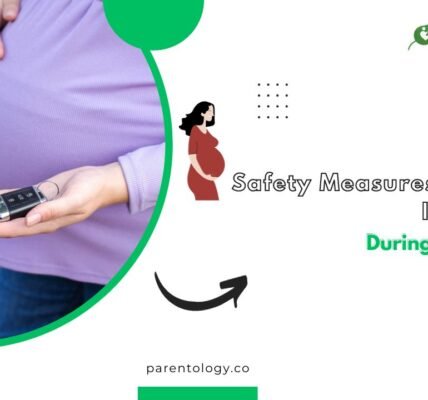9 Simple Steps to Perform a Home Urine Pregnancy Test
Taking a home pregnancy test can be a momentous occasion in your life. Whether you’re eagerly anticipating a positive result or feeling a bit uncertain, this comprehensive guide will walk you through 9 simple steps for conducting a urine pregnancy test in the comfort of your home. Whether you’re a first-time test-taker or simply need a refresher, this article will provide you with the knowledge and confidence you need.
1. Gather Your Supplies
Before you begin, ensure that you have all the necessary supplies on hand:
- A home pregnancy test kit (check the expiration date).
- A clean, dry cup for collecting your urine sample.
- A timer or a clock.
- A clean, flat surface for performing the test.
2. Read the Instructions
Each pregnancy test kit comes with specific instructions from the manufacturer. Take a moment to read and comprehend these instructions carefully. Following them precisely is crucial for obtaining accurate results.
3. Choose the Right Time
Timing is vital when it comes to pregnancy testing. The best time to take the test is in the morning when your urine is more concentrated. This enhances the chances of detecting the pregnancy hormone hCG (human chorionic gonadotropin).
4. Prepare for Collection
Collect your urine sample in a clean, and dry cup. To ensure accuracy, use a midstream urine sample. This involves starting to urinate in the toilet and then catching the stream in the cup.
5. Perform the Test
Follow these steps carefully:
Step 1: Unwrap the Test Kit
Gently unwrap the pregnancy test kit, being cautious not to damage the test itself.
Step 2: Review the Manufacturer’s Guidelines
Go through the instructions again to ensure you are following them correctly.
Step 3: Dip the Test
Dip the absorbent end of the test into your urine for the specified duration. Be sure not to immerse the entire test into the urine.
Step 4: Place the Test Flat
Lay the test on a clean, flat surface and wait for the specified time. Using a timer ensures accuracy.
Step 5: Read the Results
After the designated waiting time, examine the test results. A positive result typically displays two lines, while a negative result shows a single line. An unclear or invalid result may require retesting.
6. Interpret the Results
Understanding the results is critical:
- Positive: Two lines generally indicate a pregnancy.
- Negative: A single line usually means not pregnant.
- Invalid: An unclear result with no lines requires retesting with a new kit.
7. Handle the Test Properly
Dispose of the test kit according to the manufacturer’s instructions. Some tests can be discarded in the trash, while others may need special disposal due to their sensitivity.
8. Note the Timing
Keep track of the time when you performed the test. This information is valuable if you need to retest or consult a healthcare provider.
9. Consider Confirmatory Testing
If you receive a positive result, it is advisable to confirm your pregnancy with a healthcare provider. They can conduct blood tests and ultrasounds for a more definitive answer.
Frequently Asked Questions (FAQs)
FAQ 1: When is the best time to take a pregnancy test?
Ans 1: The ideal time is in the morning when your urine is more concentrated.
FAQ 2: Can I use any urine sample for the test?
Ans 2: For accurate results, use a midstream urine sample.
FAQ 3: How soon can I take a pregnancy test?
Ans 3: You can take a test as early as the first day of your missed period, but it’s more accurate if you wait a week after you missed your period.
FAQ 4: Can medications or medical conditions affect the test?
Ans 4: Certain medications and medical conditions can influence the results, so it’s essential to inform your healthcare provider.
FAQ 5: Can a faint line on the test mean I’m pregnant?
Ans 5: A faint line can indicate a positive result. It’s crucial to follow up with a healthcare provider for confirmation.
FAQ 6: Are all pregnancy tests the same?
Ans 6: Pregnancy tests vary in sensitivity and accuracy. Some are more sensitive and can detect pregnancy earlier than others.
FAQ 7: Can I get a false positive result?
Ans 7: False positives are rare but can occur due to specific medical conditions or medications. Confirm with a healthcare provider if in doubt.
FAQ 8: Can I retest immediately if the result is negative?
Ans 8: If your period is still delayed, it’s best to wait a few days before retesting.
FAQ 9: Can stress affect the results of a pregnancy test?
Ans 9: Stress is unlikely to affect the results of pregnancy tests.
FAQ 10: Can I trust the results of a home pregnancy test?
Ans 10: Home pregnancy tests are generally reliable if used correctly. However, consult a healthcare provider for confirmation.
FAQ 11: What do I do if I receive an unclear or invalid result?
Ans 11: If the result is unclear or invalid, it is recommended to retest with a new kit, following the instructions diligently.
Conclusion
Conducting a urine pregnancy test at home is a straightforward process, but it carries significant emotional weight. Whether the test confirms your pregnancy or provides relief, you’ve taken the first step in understanding your body’s changes. To access additional information and support, explore our articles on Parentology.
Embrace this pivotal moment, and remember that you are not alone on this journey. If you have any doubts or concerns, consult your healthcare provider and specialist. They are there to support you through every step of your pregnancy. Congratulations on taking control of your reproductive health!





